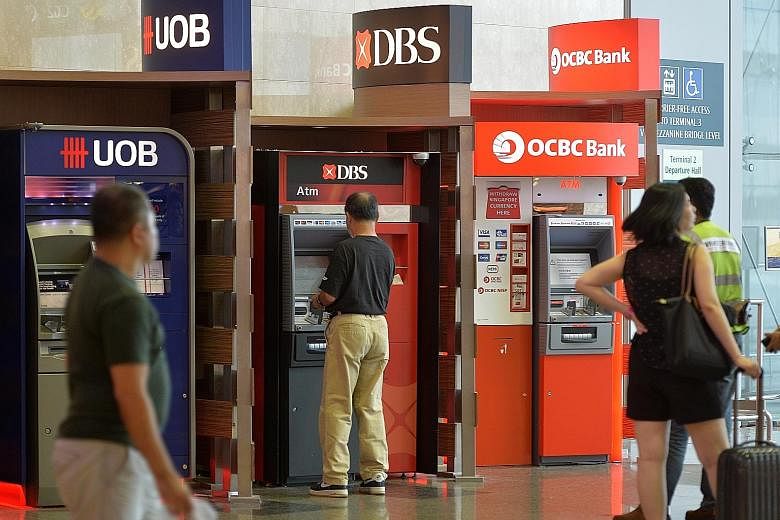Singapore's three biggest banks will be required to prioritise long-term funding from next year to ensure they will be stable in extended periods of market stress.
The Monetary Authority of Singapore (MAS) issued Notice 652 on July 10, which will require DBS Bank, OCBC Bank and United Overseas Bank (UOB) to maintain a net stable funding ratio (NSFR) of 100 per cent from Jan 1 next year.
The NSFR, a key reform announced by the Basel Committee on Banking Supervision in January 2014, measures a bank's long-term resources over 12 months of liquidity requirements.
The aim is to ensure banks can continue to operate when wholesale funding markets are closed for an extended period. During the financial crisis, many global banks struggled to access external funding, severely stressing the banking system.
Singapore's three domestic systemically important banks (D-SIBs) will have to maintain a net stable funding ratio of 100 per cent by Jan 1. Other D-SIBs in Singapore with headquarters offshore will have to meet a minimum NSFR of 50 per cent. The nation's top banks said they already met the MAS' ratio requirements.
"We have adequate stable funds as prescribed by the NSFR standards, and are already holding a comfortable buffer above the regulatory requirements," OCBC's chief financial officer Darren Tan told International Financing Review (IFR).
A DBS spokesman told IFR that the bank's NSFR was above the regulatory requirement for 2018, while an industry source said UOB had been tracking its NSFR for a long time and that the ratio was now well above 100 per cent.
"Last year, many of the banks were preparing for Basel III in terms of capital and liquidity and with their bond issuances, so a lot has been done to prepare for NSFR," said Mr Simon Chen, senior analyst at Moody's Investors Service. "Going forward, further fund- raising will be incremental as and when they need it."
Attracting more deposits is one way to beef up NSFRs. Singapore banks' loan-to-deposit ratios range between 84 per cent and 87 per cent, which is better than Australian banks which average over 100 per cent, as well as most European names, said OCBC credit analyst Andrew Wong.
Debt bankers also see opportunities for banks to issue more long-term funding from the market. "It is positive news for the primary bond market," said one Singapore-based debt capital markets head.
"The NSFR rules also allow banks to hold a percentage of corporate bonds as high-quality liquidity assets, which means the banks will provide a larger investor pool."
Taking on corporate debt, however, may have a negative impact in the future.
The Basel Committee is now exploring standards under the recalibrated Basel III standards, dubbed the Basel IV regime by the financial industry. Under those proposed standards, banks holding loans to large corporates may have to allocate more capital.
"This is another consideration that is important as it relates to how much capital a bank has to allocate against large loans," said Mr Eugene Tarzimanov, vice-president and senior credit officer at Moody's.
"The Basel Committee has not finalised work on this yet but, if implemented, it will make it more difficult for banks to provide long-term large loans to corporate clients."
The NSFR will complement the Basel Committee's liquidity coverage ratio, which measures a bank's ability to survive a significant stress scenario lasting 30 days.
REUTERS

